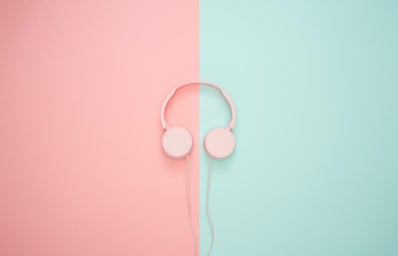Researchers are currently studying the benefits and effects of pink noise on sleep, memory, and studying. It’s a great sound therapy for brain stimulation. Read on to learn about the basics of pink noise and some of the studies done to see if this sound therapy could be a good fit for you!
What is pink noise?
You’re probably familiar with white noise—like chatter and traffic noise—but have you heard of pink noise? Pink noise is another type of background noise with a wider range in frequency levels and a stronger frequency when it’s lower, meaning the lower pitches are louder and create a nicer brain stimulation. Some examples of pink noise can be found in nature (think: ocean waves crashing, wind and leaves rustling, rain falling, etc.). If you’re a nature lover, pink noise might be just the thing to help you relax!
benefits of pink noise
Improves Sleep
While we sleep, our bodies are put in a state of deep slumber, allowing them to relax and restore our minds and bodies. Pink noise helps sleep by amplifying the power of the slow brain waves during the deep cycle of our sleep. A study done in 1991 by Japanese scientists found that pink noise helps put you in a deeper and less fragmented sleep. Another study found that it can help you fall asleep faster! These studies aren’t exactly conclusive, but they do give good insight on how pink noise can help you.
Helps with Memory
During the restorative part of your sleep cycle, your brain works on creating your memories and storing them. However, as we get older, our memory tends to get worse since our bodies spend less time in the restorative part of the cycle. A study found that older adults who used pink noise as a sound therapy during sleep had better sleep quality and performed better on memory tests the next day. For younger adults, those who used sound therapy during a nap did better on verbal tests than those who didn’t. This is a good tip to keep in mind for exam season!
boosts MOOD
Some researchers at Neurofield have also found a positive correlation with brain stimulation and pink noise. Many patients have found a general increase in motivation, mood, and sleep. These patients have also noted less brain fog and better focus. They reported feeling lighter and happier than before, giving promising reviews of pink noise and its brain stimulation.
If you feel like using pink noise is something you would be interested in, there are so many options through Spotify, Apple Music, and YouTube! Although these versions aren’t the exact same technology used in the scientific studies, they can bring similar effects to help you with sleep, memory, and your mood! We like pink noise a lot better than white noise because of its lower frequencies and more calming effect—and who doesn’t love the colour pink? We hope you’re also able to find which form of sound therapy works best for you!






